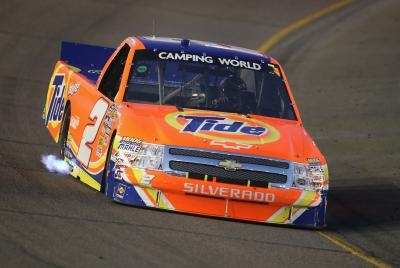
Mini-trucks like the Chevrolet S-10 may offer a number of advantages over cars, but they fall short in two crucial factors: aerodynamics and a lockable trunk. A standard tonneau cover can help to address both of these factors and a well-designed cover can easily turn your truck's inherent liabilities into its biggest trump cards.
A sharp edge passing through air creates wake vortices. These mini-tornadoes are hugely restrictive to movement, absorbing a certain amount of the truck's energy to spin the air instead of flowing smoothly over it. Trucks get away with sharp angles partially because the wake vortices flowing from the roof move downward and pressurize the open space in the bed. This creates a sort of cushion or "invisible tonneau cover" that helps air to flow over the tailgate instead of slamming against it.
If air pressurizes in the bed, you may wonder why tonneau covers work at all. Compressing air in the bed requires energy in the form of large wake vortices. The larger the bed, the more power it takes to compress the air. The energy from your truck's forward movement powered by the engine, ultimately comes from gasoline. Thus, covering up the truck's bed increases fuel economy, top speed and acceleration by ensuring the truck expends more of its power moving forward and less compressing air.
If going for pure functionality, there's nothing wrong with simply slapping a piece of 3/8-inch plywood on top of your truck's bed and holding it in place with six to eight hood pins. While not the most elegant of solutions, it is inexpensive and works as well as any comparable aftermarket cover. It won't hinge upward like an aftermarket cover, but easily fix that with a few hardware-store hinges and some screws. Consider screwing a 2-by-4 to the bottom to stiffen its length.
The fast-back roofline used by 1960s stock car racers keeps airflow smooth or laminar -- layered and streamlined -- all the way to the tail lights, where airflow coming from under the car moves up and cancels out the wake vortices. Build a wooden framework around the perimeter of your bed and a vertical framework up the back of your rear window, shaping it so that it follows the truck's sides and roofline. Staple a piece of 1,000-pound test fishing line to the rear of the frame and run it to the front vertical support directly ahead of it. Pull the line as tight as you can and staple it in place. Repeat this about 500 times along the top and sides of your tonneau until you have a giant spider-web of fishing line that will support a double-layer of fiberglass.
If you care about how your wooden tonneau looks, then bevel the edges with a router or circular saw, sand the cover completely smooth with 800-grit sandpaper, spray it with gap-filling primer and paint it. When it comes to materials, wood will be the cheapest and easiest to work, but also the heaviest. Fiberglass will probably be the best looking and aluminum will probably be the lightest, but will prove far harder to work into an aesthetically pleasing shape than fiberglass. For bed access with the "Ultimate Aero," you can either cut a door in the middle or simply hinge the entire top from the side. If you're the type of person who thinks that what's behind you is important, consider installing a large strip of Lexan, an engineered piece of polycarbonate resin thermoplastic, down the center of the "Ultimate Aero."